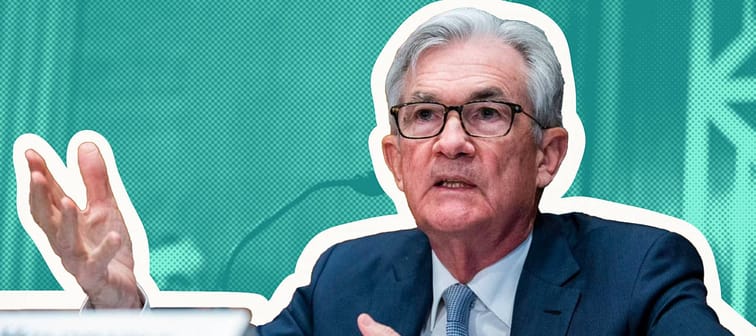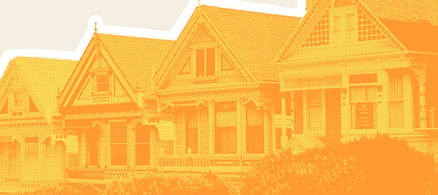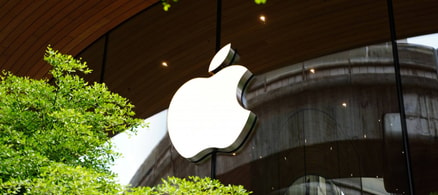Why is the Fed raising rates?
The short answer is to rein in inflation, which is running at its fastest pace in four decades. The central bank says it will take longer to subdue than it once thought, projecting a 4.3% inflation rate this year, 2.7% next year and 2.3% in 2024.
“We’ve had price stability for a very long time, and maybe came to take it for granted, and now we see the pain. I’m old enough to remember what very high inflation was like,” Powell says.
“High inflation takes a toll on everyone, but especially on people who use most of their income to buy essentials like food, housing and transportation.”
The Fed kept rates low to make it cheap to borrow and spend, juicing the economy in the wake of pandemic. And, at least before war broke out in Ukraine, the U.S. was solidly recovering. Economic activity expanded at a robust 5.5% last year.
Strong gains in the job market exceeded analyst expectations as omicron infections faded, and unemployment hit its lowest level since the start of the pandemic.
“The economy no longer needs or wants this very highly accommodative stance,” Powell says.
“Look at today’s labor market. What you have is 1.7-plus job openings for every unemployed person. So that’s a very, very tight labor market. Tight to an unhealthy level.”
As the economy rebounded and wages increased at a remarkable pace, demand for consumer goods and services surged. Coupled with supply-chain disruptions, inflation spiked to well above the Fed’s 2% target.
Now, with the federal government’s ban on Russian oil and other energy imports, life is getting even more expensive. Consumer prices in February were up 7.9% over the same month last year.
“You’re seeing supply chain issues around shipping, and lots of countries and companies and people not wanting to touch Russian goods. So that’s going to mean more tangled supply chains. That could actually push out the relief we were expecting,” Powell says.
By raising interest rates, the Fed is effectively cooling demand, with the intention of curbing high prices. Powell admits that the central bank would have acted sooner, if it had known ahead of time how recent months would play out.
Meet Your Retirement Goals Effortlessly
The road to retirement may seem long, but with WiserAdvisor, you can find a trusted partner to guide you every step of the way
WiserAdvisor matches you with vetted financial advisors that offer personalized advice to help you to make the right choices, invest wisely, and secure the retirement you've always dreamed of. Start planning early, and get your retirement mapped out today.
Get StartedCredit cards and car loans
The Fed’s rate hike is expected to have the biggest immediate impact on credit card borrowers, says Bruce McClary, a spokesman for the National Foundation for Credit Counseling.
That’s because interest rates on plastic change in sync with the prime rate, a key lending rate that piggybacks off the Fed rate.
Credit card issuers are required to provide their customers with a 45-day advance notice when they plan to raise rates, McClary says. Borrowers today are paying an annual percentage rate of more than 16%, on average.
“People are already paying a lot with the debt they’re carrying on their cards, and it’s about to get even more expensive with these rate hikes,” McClary says.
The average credit card balance last year was $5,525, according to credit reporting agency Experian.
It would take a borrower making the minimum monthly payments more than 16 years and an additional $6,000 in interest to pay off that kind of balance with the average APR, Ted Rossman, senior industry analyst at CreditCards.com, told CNBC.
If the APR were to go up less than one percentage point, the cost of that debt would go up another $300 to $400, Rossman said.
Auto loans could also get more expensive. In 2018, when the Federal Reserve increased interest rates four times, the average APR on a new car loan went from 5% to 5.8%, according to the TrueCar Advisor digital marketplace.
Mortgage rates and HELOCs
The federal funds rate helps dictate variable mortgage rates, not fixed rates. Both types of loans, however, could get more expensive this year.
The Fed earlier announced plans to stop buying billions in Treasury bonds and mortgage-backed securities — which it’s done to help keep longer-term interest rates low — by early March. Now the central bank expects to begin selling off its holdings at a coming meeting, a move Powell says may have a similar effect to another interest rate hike.
Economists with real estate brokerage Redfin expect the average 30-year fixed mortgage rate will reach 4.3% by the end of 2022.
The average 30-year rate hit a record low of 2.65% in January 2021. It’s been ranging above 3.5% for most of this year.
In real terms, a quarter-point increase on a mortgage amounts to an additional $14.52 per month for every $100,000 borrowed, says Corey Burr, senior vice president at TTR Sotheby's International Realty in Washington, D.C.
A rate hike from the Fed also impacts home equity lines of credit, loans that move in sync with the prime rate.
If you’re paying 4% on a $75,000 HELOC, your monthly interest payment is $250. If your rate goes up by 0.25%, your payment would be about $265.
Stop overpaying for home insurance
Home insurance is an essential expense – one that can often be pricey. You can lower your monthly recurring expenses by finding a more economical alternative for home insurance.
SmartFinancial can help you do just that. SmartFinancial’s online marketplace of vetted home insurance providers allows you to quickly shop around for rates from the country’s top insurance companies, and ensure you’re paying the lowest price possible for your home insurance.
Explore better ratesInvestments and savings
To be sure, the ultralow interest rates that have remained throughout the pandemic benefited borrowers more than savers.
Average rates on savings and money market accounts have been abysmal at 0.06% and 0.08%, respectively. A 12-month certificate of deposit earns 0.14%. That amounts to $14 on a $10,000 CD after one year.
Higher interest rates — even if they’re incremental — are a boon for Americans being conservative with their cash.
“We’d all love to be making something other than zero or near zero,” says Ken Johnson, an associate dean and professor of finance at Florida Atlantic University.
For now, the Fed is forecasting a federal funds rate of 1.9% at the end of this year — a full percentage point higher than it projected a few months ago. And over the following two years, the rate could rise to 2.8%.
But these forecasts come with caveats.
“This is all new territory,” Johnson says. “COVID has virtually disappeared from the news. But we could have a new variant. It could be more virulent the next time around. Who knows what’s going to happen in Russia and the Ukraine. Is it going to expand, go away or be a slow simmering pot?”
The Fed also hasn’t committed to front-loading its rate increases or going steadily throughout the year — but Powell says the central bank “will strive to avoid adding uncertainty to what is already an extraordinarily challenging and uncertain moment.”
Sponsored
Follow These Steps if you Want to Retire Early
Secure your financial future with a tailored plan to maximize investments, navigate taxes, and retire comfortably.
Zoe Financial is an online platform that can match you with a network of vetted fiduciary advisors who are evaluated based on their credentials, education, experience, and pricing. The best part? - there is no fee to find an advisor.







